In decades of teaching and helping other horse people to train their own horses with clicker training I noticed patterns of why many people don’t accomplish their dream behaviours. In this series I’ll share the most common pitfalls clicker trainers fall into and what you can do to avoid them. When you recognize one or more of them, stay tuned. In the next blogs I will elaborate on solutions to solve and prevent each and every one of them!
I’m speaking from experience and I also know that you can learn to avoid these with the strategies I will be sharing.
Keys to Success in Clicker Training your Horse
As a trainer you need to develop your trainer’s skills. It’s not only about timing and using the right appetitive for the behaviour and ‘setting your horse up for success’. There are actions you can take that have a direct correlation to the outcome you want. I call these the HippoLogic Key Lessons.
When we skip (one of the 6) Key Lessons for Trainers, we might start to believe clicker training horses goes slower than using coercion. This is simply not true!
Make Learning Easy for your Horse
In my HippoLogic training system there are 6 HippoLogic Key Lessons for Horses. Those are the basic behaviours that makes training every other behaviours simpler and faster.
These are 6 simple behaviours that you can teach your horse fast and they are the building block for all future behaviours.
In the Key Lessons for Horses your horse learns the principles of positive reinforcement, how he can influence the environment with his behaviour (the actions of trainer, getting treats, etc), he learns to behave safely and also learns to control his emotions (keep calm) and paying attentions to your cues.
I consider these 6 basic behaviours the building blocks, and you can use them like Lego. You might not need each and every one of them all the time, but they are invaluable to train all future behaviours.
As trainer, we always have to ask ourselves: How can we make this as easy as pie for our horses to understand, and keep it interesting and challenging enough at the same time to keep our learner engaged?
Make Learning as Easy for Yourself, as You Do for Your Horse
In my work as clicker coach, I’ve always asked myself: ‘What does my learner (my client) have to know in order to become an autonomous equine clicker trainer?’ How can I set my people up for success, so they know how to avoid common pitfalls and know how to get out of them, once they have fallen into them.
Common pitfalls for Clicker Trainers
The HippoLogic training system is based on the 6 Key Lessons for Horses and the 6 HippoLogic Keys to Success for Trainers. The Success Keys for Trainers are success habits that are beneficial to everyone who trains horses (or want to accomplish goals in live).
1. Getting Stuck: Lack of Knowledge or Info Overload
Pitfall number 1 is getting stuck, because they lack information or knowledge. Or getting too much (contradictive) information. Overwhelm kicks in and training the behaviour want comes to a halt.
Focus is taken off their goal and a new behaviour will become the focus. Until they get stuck and a new goal is taken on, without accomplishing what they really had in mind or what they really want to do with their horse.
Then they get discouraged, feel incompetent or frustrated, sometimes want to give up on positive reinforcement (clicker) training all together.
They see others reaching their goals with traditional/NH training and they want that too: results! They can be tempted to fall back on training with aversives and coercion, even when they don’t enjoy it.
I’ve struggled with this when I started in 1999. I got ‘Results’ in training using NH, but struggled to get the Relationship with my horse in that method. Something I really craved. I knew in my heart that positive reinforcement (R+) could give me the Relationship I wanted, but at that time I didn’t know how to get the Results with R+. This put me on the path to develop a positive reinforcement horse training system that I could teach, so that the results with clicker training could became within reach of all horse people: the HippoLogic system. I will share this in my next blog!
2. Wishy-washy about Your Goals
Being wishy-washy about the behaviours they train. They find it hard to stay focussed on the outcome they want and to keep going. They get stuck. They shift their focus to other behaviours. Behaviours they see other people train, and it looks great, easy and simple! They want that, too!
Then it doesn’t work out the way they imagined (see pitfall #1) and they see something else that is fun and interesting to train! Yeey, let’s do that instead!
I call this the ‘Shiny Behaviour Syndrome’ (instead of shiny object syndrome) because horse people distract themselves from what they really want.
Deep down they believe their dream is impossible, they are afraid of failing, they’re not sure they can do it or that their horse would be able to do it, or they get continuously discouraged by people in their environment: “You can’t train that!”, “You’re spoiling your horse with cookies, he needs a leader! Man up!” and so on.
Sometimes they abandon their dream because they want to fit it with their peers. They want to belong. It’s hard to be the only dressage rider in a barn full of show jumpers, it’s hard to be the only recreational rider in a barn full of competition riders. It’s hard to clicker train your horse in a barn full of people who use force and coercion to train and ride their horses. If you struggle with this, read this blog.
3. Only Keeping Your Eye on the Prize (Focus on Outcome)
The next pitfall that’s very common, is that people have a goal and only aim for the outcome. They know what they want and what it looks like. Without realizing it, they try desperate to go from 1 to 100 in one go.
They forget to pay attention to the steps needed, that lead to their goal. A common example: when riders want to ride their horse ‘on the bit’ so their horse is fully responsive to the lightest rider aids and they are moving in harmony, together. The aim in dressage.
For example
The picture (outcome) is a horse that has his head on the vertical, the neck is bend and the horse is moving fluently forward in balance. When riders lack knowledge of the How To, they pull the reins to coerce the horse in the desired head position (sometimes with draw reins, martingales or sharp bits), without realizing they block the hind legs from moving more towards the center of gravity, so he can carry them in balance.

They then need to use a lot of leg aid (or the whip) to keep their horse moving fluently forward. Now it looks like the goal is reached, but it’s not. It doesn’t feel that way (and they realize it at some level).

It’s hard to admit it’s not working, so they try harder (and get more frustrated). Or they finally start to believe that ‘this is it’ and the expert is probably right: this is the way. When this is the norm, it becomes normal (“norm [to] all”) to ride this way. Many instructors are at fault, too. They advice using spurs, to get quicker to the look-a-like outcome.
You know you’ve fallen into this pitfall when reaching your goal seems 1) unreachable or 2) isn’t as satisfying as you thought it would be (and that’s hard to admit. Even to yourself). Do not despair, there is a solution! And I’m going to share it with you in the next blog!
4. Quitting before Getting Results
Trainers stop before they reach their goals with their horse. Sometimes this happens because they struggle with pitfall #1, #2, #3 or a combination of these factors. In other cases people stop training simply because they feel lonely without someone to cheer them on.

Many clicker trainers, who do have a goal, are clear about it, know how to train it, still don’t accomplish it. Something happens, and they fall out of their training routine. Maybe it’s because of their work, or their family needed their attention, or sometimes just because they went on vacation and never got back in training mode with their horse. Or the weather changed and they thought that it’s impossible to work on their goal behaviour in Winter/Summer/Spring/Autumn. We’ve all experienced it. This is a simple pitfall to avoid and one of the easiest to solve, so stay tuned.
5. Forgetting to Set YOURSELF up for Success, too!
Are you only thinking about your horse in training? How to serve him best?
Some people realize so well what their horse needs, in order to teach their horse a new behaviour quickly and without many detours. They know exactly how to help their horse to learn!
Yet, they forget what they need, in order to speed their learning process. They forget how to make training feel effortlessly and fun for themselves! This struggle often stays under the surface, because we don’t know what we don’t know, right?
It’s like when you discover how to learn to read a street map (or following instructions on Google Maps). Suddenly you realize how many times you’ve taken a detour and it explains why you’ve felt lost. I will share a tool that prevent this from happening. With this tool in hand these things won’t happen anymore!
You can set yourself up for success and speed up your learning process by avoiding making the same mistake over and over. I’ve seen so many times that dedicated horse people are only focussed on the learning process of their horse, without realizing that they are learning about clicker training, too. In this blog I give 5 tips to set yourself up for success in clicker training you horse.
6. Getting stuck in Undesired Emotions
Last but not least is the pitfall getting stuck in emotions: they see their horse is frustrated, but don’t know what to do to turn it around or prevent it next time. When we fall into the same pitfall over and over, we want to quit.
We might think: “This [clicker training/clicker training behaviour X] is not for us”. Maybe we have 1 tool (a hammer) and try to treat everything like a nail. That’s frustrating! When we discover that there is a whole range of tools at our disposal, all projects are suddenly so much easier to accomplish! That’s why I will share and explain my tools with you in the next blogs.
When you’re ready, here are 2 ways I help horse people
In my community I teach all the tools I’m talking about and I help you personally to implement them so you can accomplish anything you want with your horse.
Do more with Clicker Training!
Are you a compassionate horse owner who wants to build a strong friendship with your horse? Would you like to understand your horse better and help your horse to understand YOU better? Get access to high quality online training and a fabulous, supportive R+ community in our HippoLogic Clicker Training Academy. Check out the link!
Want to do more with Clicker Training?
Join the HippoLogic Academy! I coach and support you personally getting your dream results with positive reinforcement, so that you can bond with your horse in the process. Create a connection build on mutual trust and understanding, a clear two-way communication built on love. Click the image to go access the application form ↓

Not sure? Start with a free clicker training assessment to get taste of what it feels like to work with me. When you have a specific struggle that you want to overcome, don’t hesitate to contact me.
In this assessment you’ll discover what’s holding you back from accomplishing the things you want with your horse. After our conversation you’ll know exactly what to do, in order to move forward towards your goals.
Happy Horse training!
Sandra Poppema, B.Sc., founder of HippoLogic & HippoLogic Clicker Training Academy

Join us!










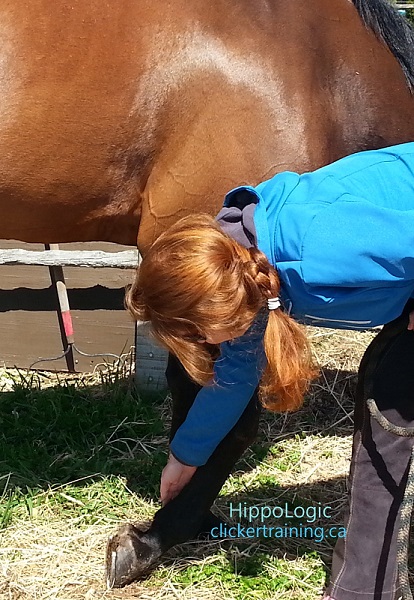
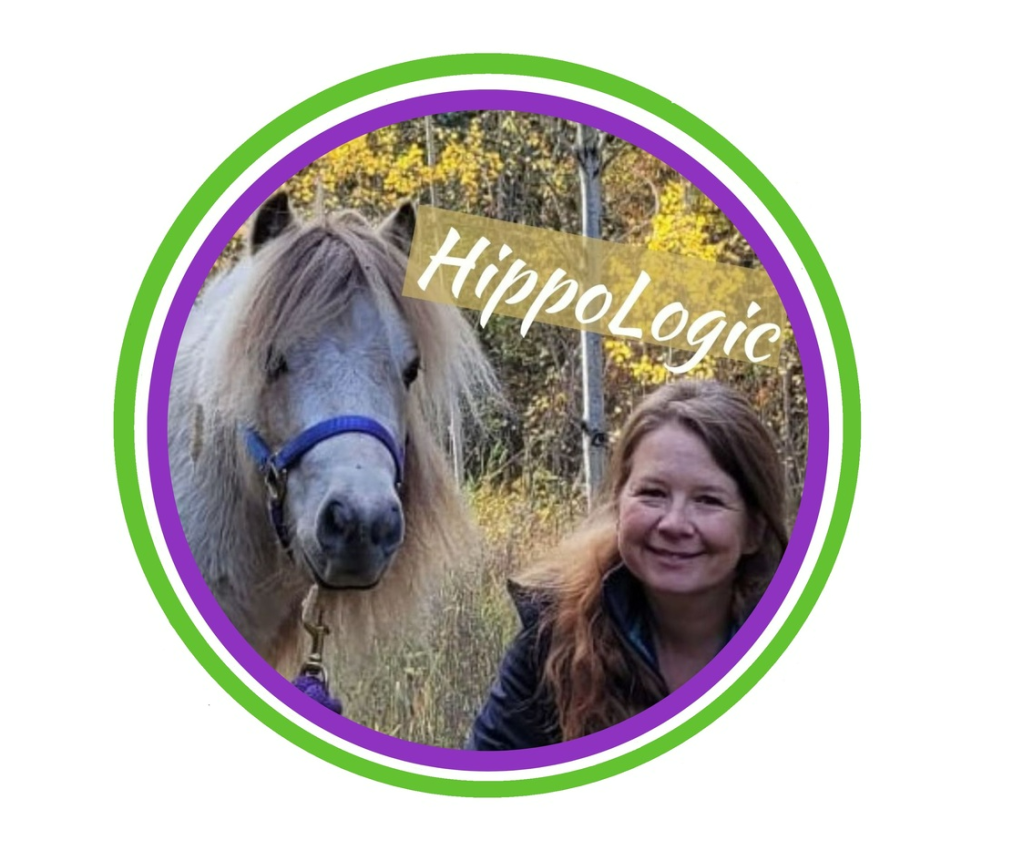











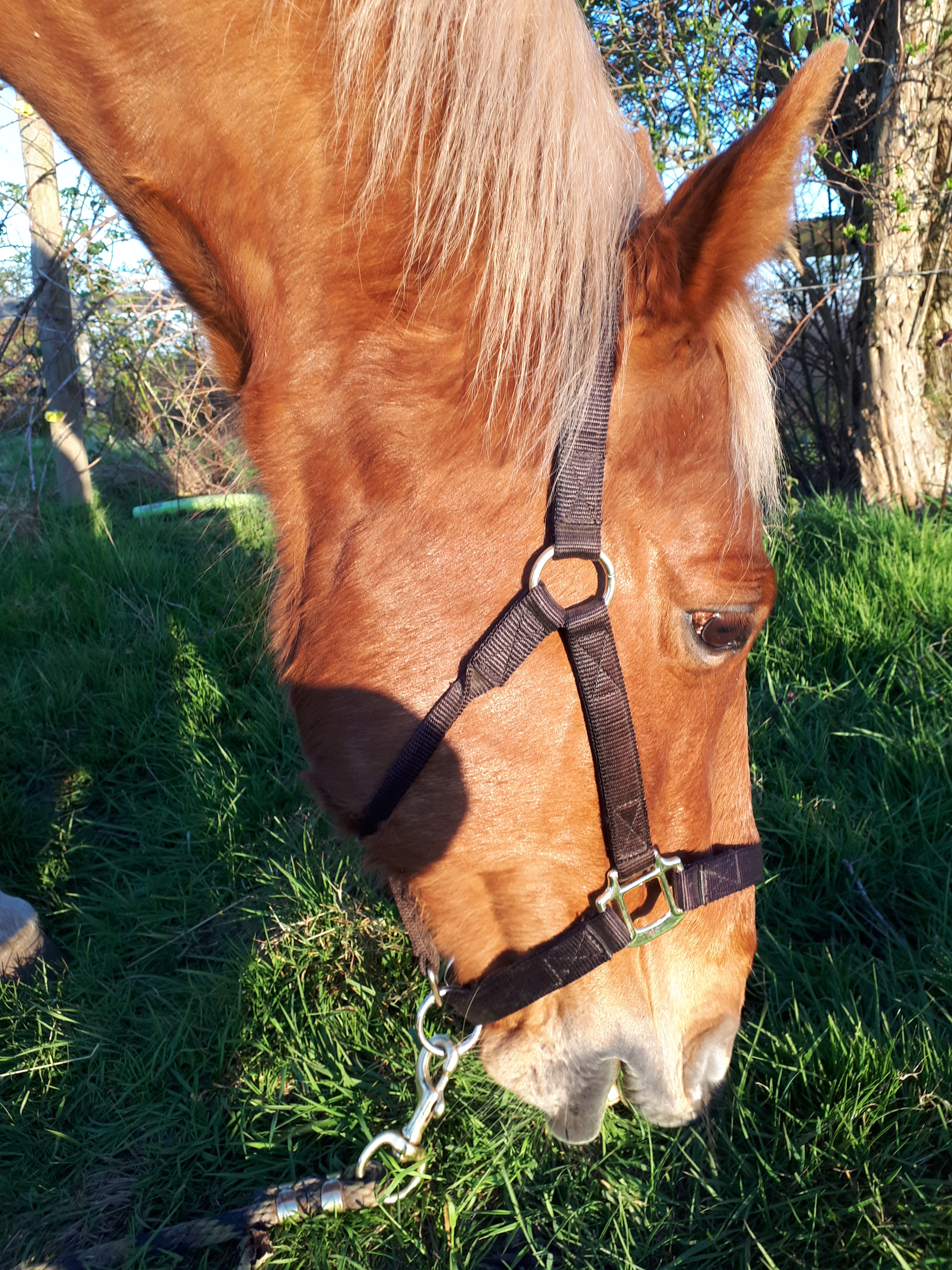 Do you know the biggest pitfall most horse lovers fall into, when they want to teach their horse manners on grass? They use negative reinforcement or punishment to train it .
Do you know the biggest pitfall most horse lovers fall into, when they want to teach their horse manners on grass? They use negative reinforcement or punishment to train it .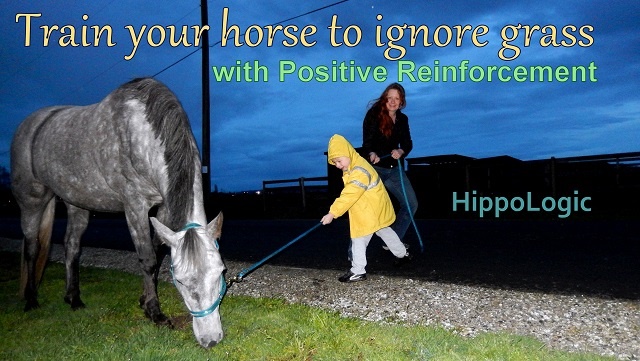
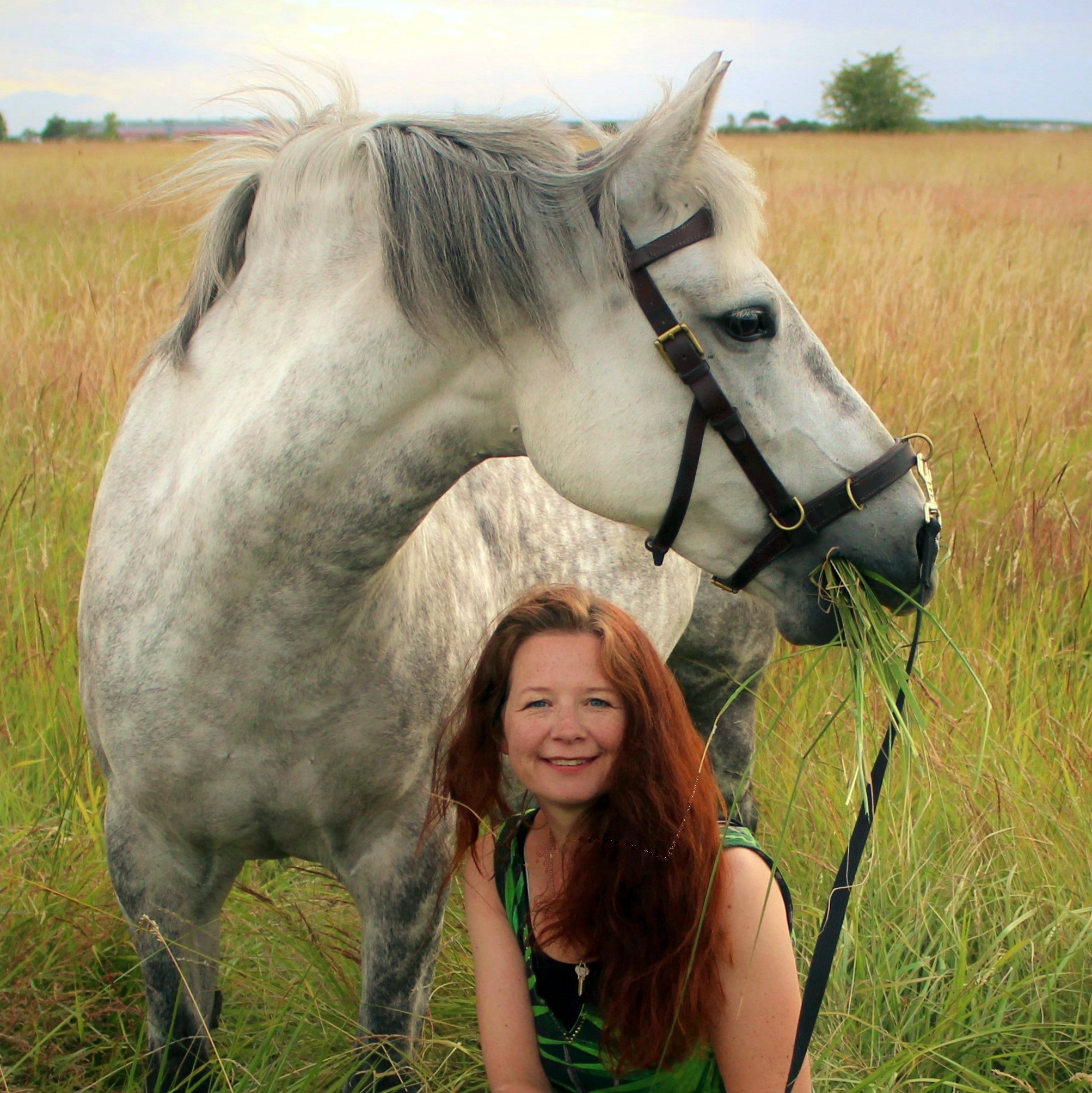 Creator of
Creator of 
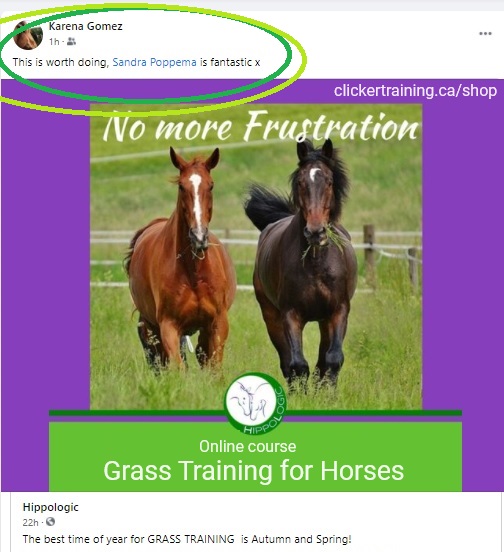
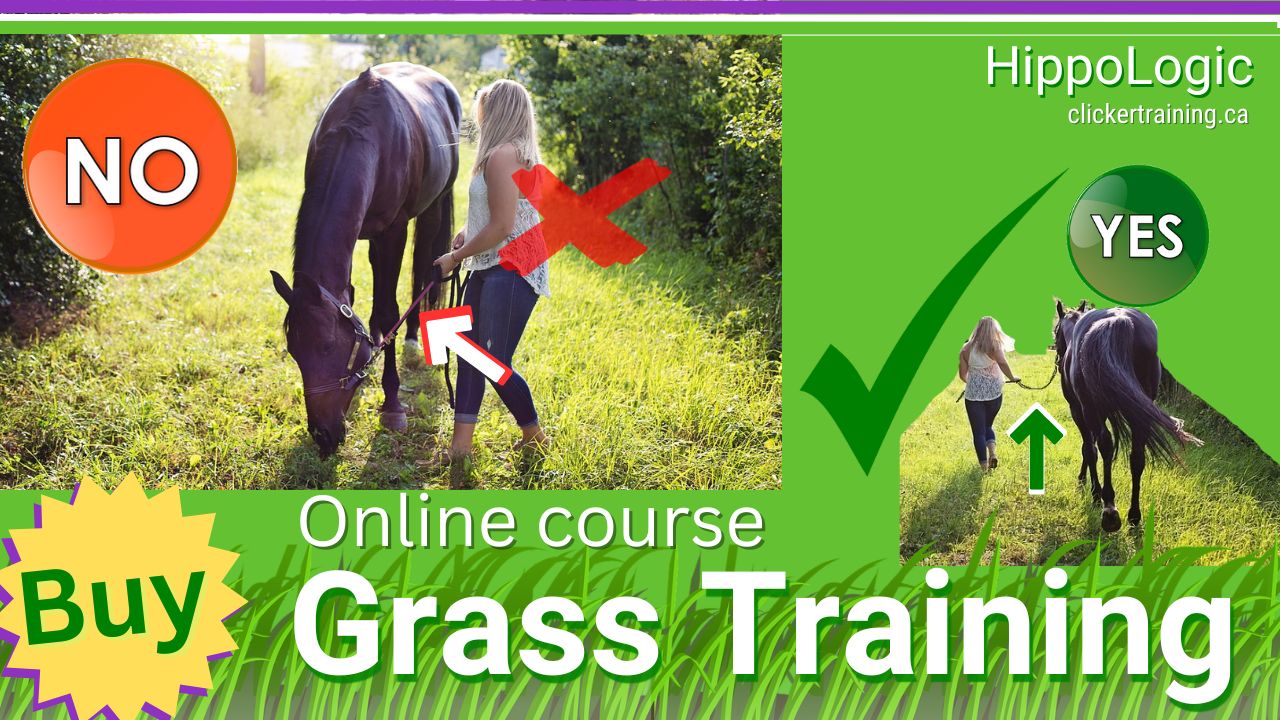





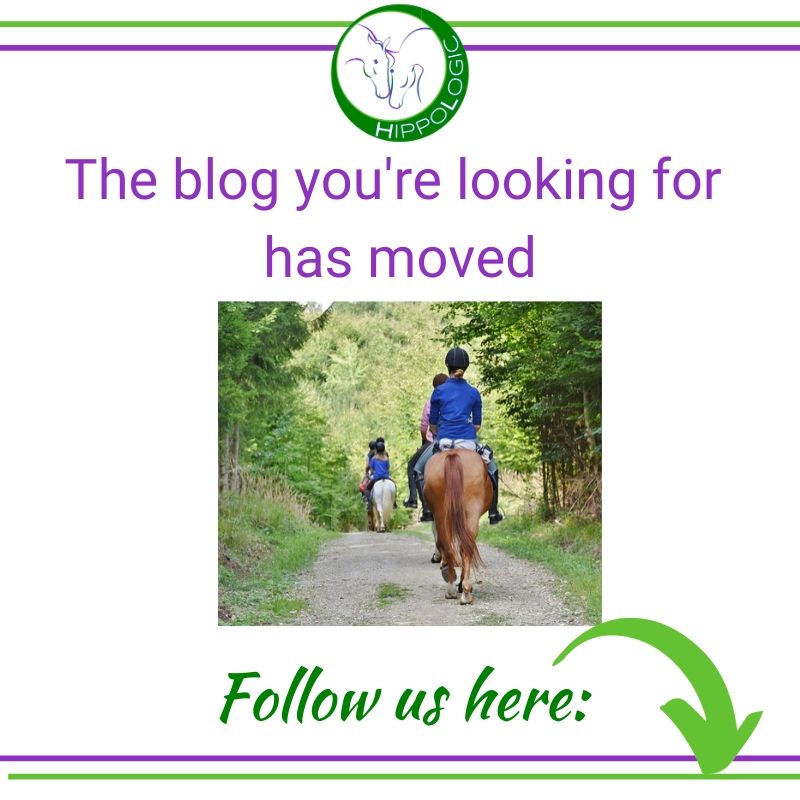
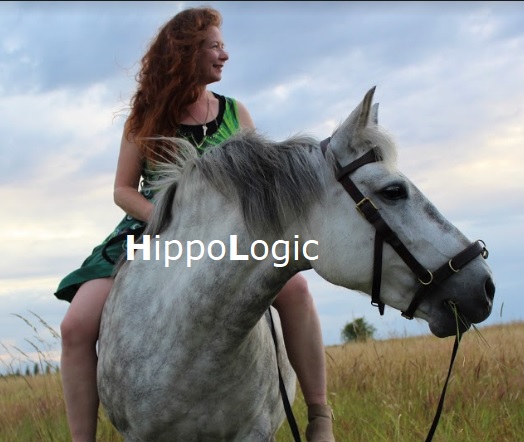










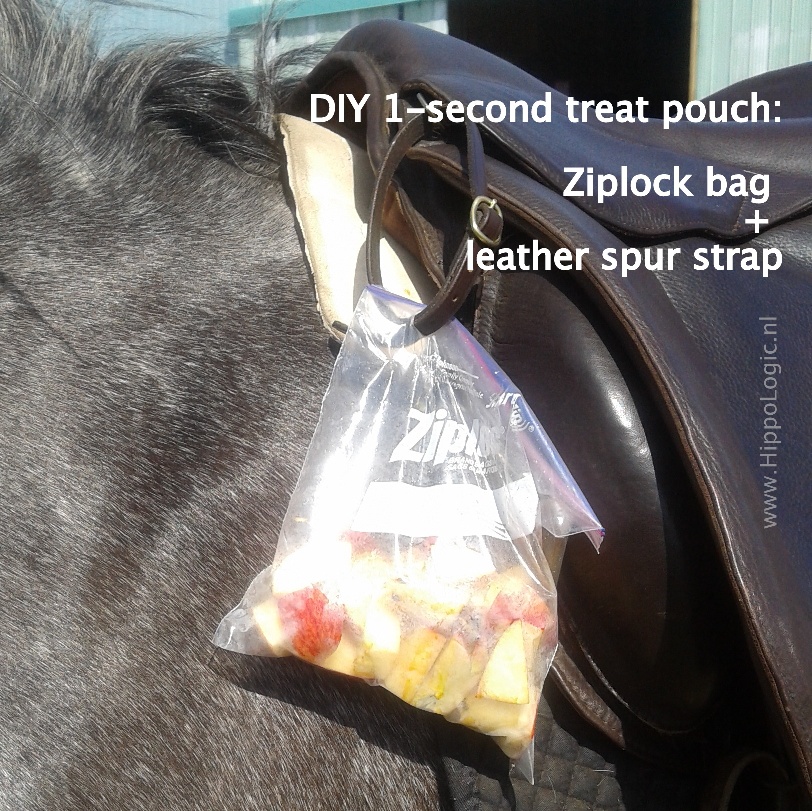
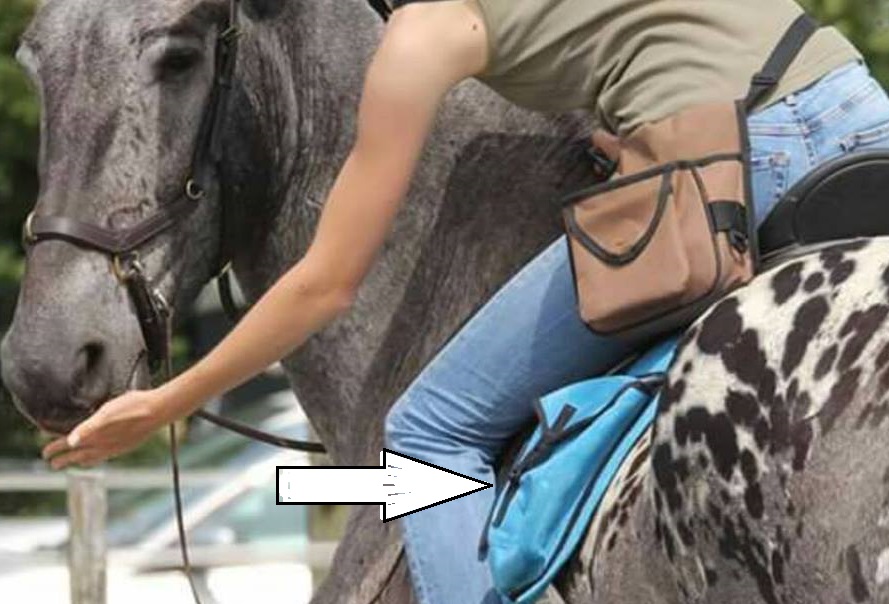

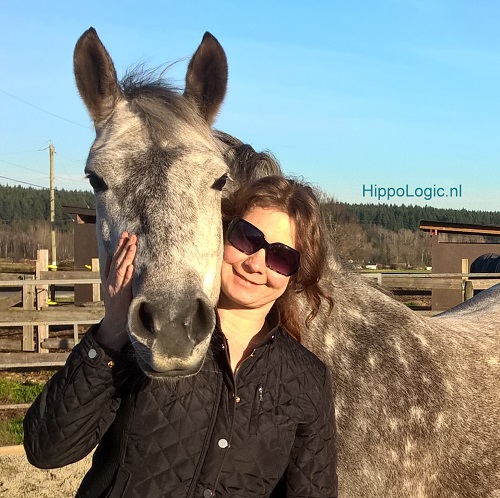










 I am playing with this idea for a long time and I finally found the courage to take action!
I am playing with this idea for a long time and I finally found the courage to take action!

 Sometimes your riding instructor is a part of your Success Team, but only if he or she knows what your dream is. You have to share your dream so your accountability partner can help you keep on track.
Sometimes your riding instructor is a part of your Success Team, but only if he or she knows what your dream is. You have to share your dream so your accountability partner can help you keep on track. If it comes to accomplishing your equestrian dreams, no one is pushing you every day to take a small step towards your goal.
If it comes to accomplishing your equestrian dreams, no one is pushing you every day to take a small step towards your goal. Do you remember what you wanted when you got your horse? What did you wanted more than anything out of that relationship? Even if you forgot about your dream or someone talked you out of it, I can help you retrieve that dream.
Do you remember what you wanted when you got your horse? What did you wanted more than anything out of that relationship? Even if you forgot about your dream or someone talked you out of it, I can help you retrieve that dream. Share your equestrian dreams in the comments. I love to hear about yours!
Share your equestrian dreams in the comments. I love to hear about yours!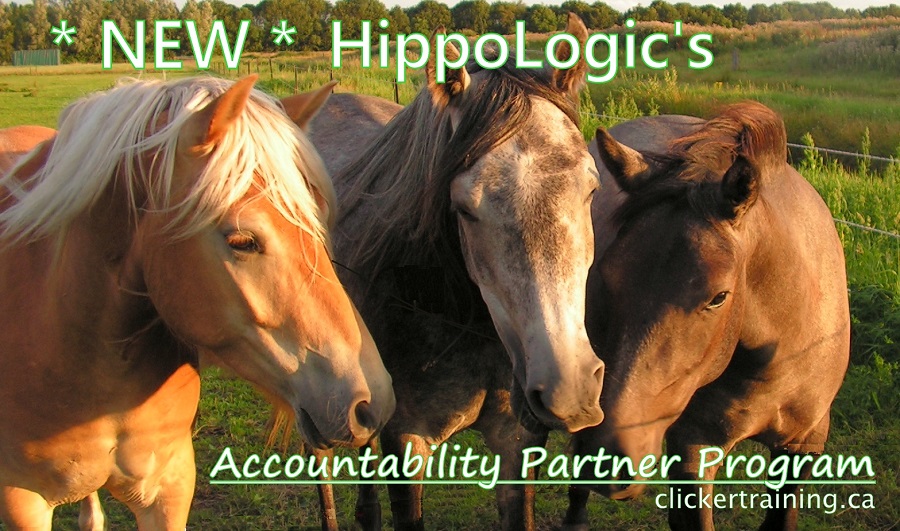
 Clicker training is based on positive reinforcement. Positive reinforcement is strengthening behaviour by adding an appetitive (=something the horse wants). After the marker signal (the click) the horse receives a treat.
Clicker training is based on positive reinforcement. Positive reinforcement is strengthening behaviour by adding an appetitive (=something the horse wants). After the marker signal (the click) the horse receives a treat. If you find money on the street, you will be checking the streets or wherever you found the money the first time more often for money, until it wears out.
If you find money on the street, you will be checking the streets or wherever you found the money the first time more often for money, until it wears out.





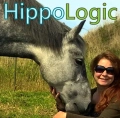

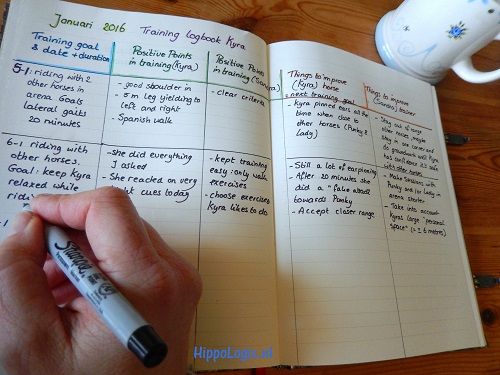


You must be logged in to post a comment.